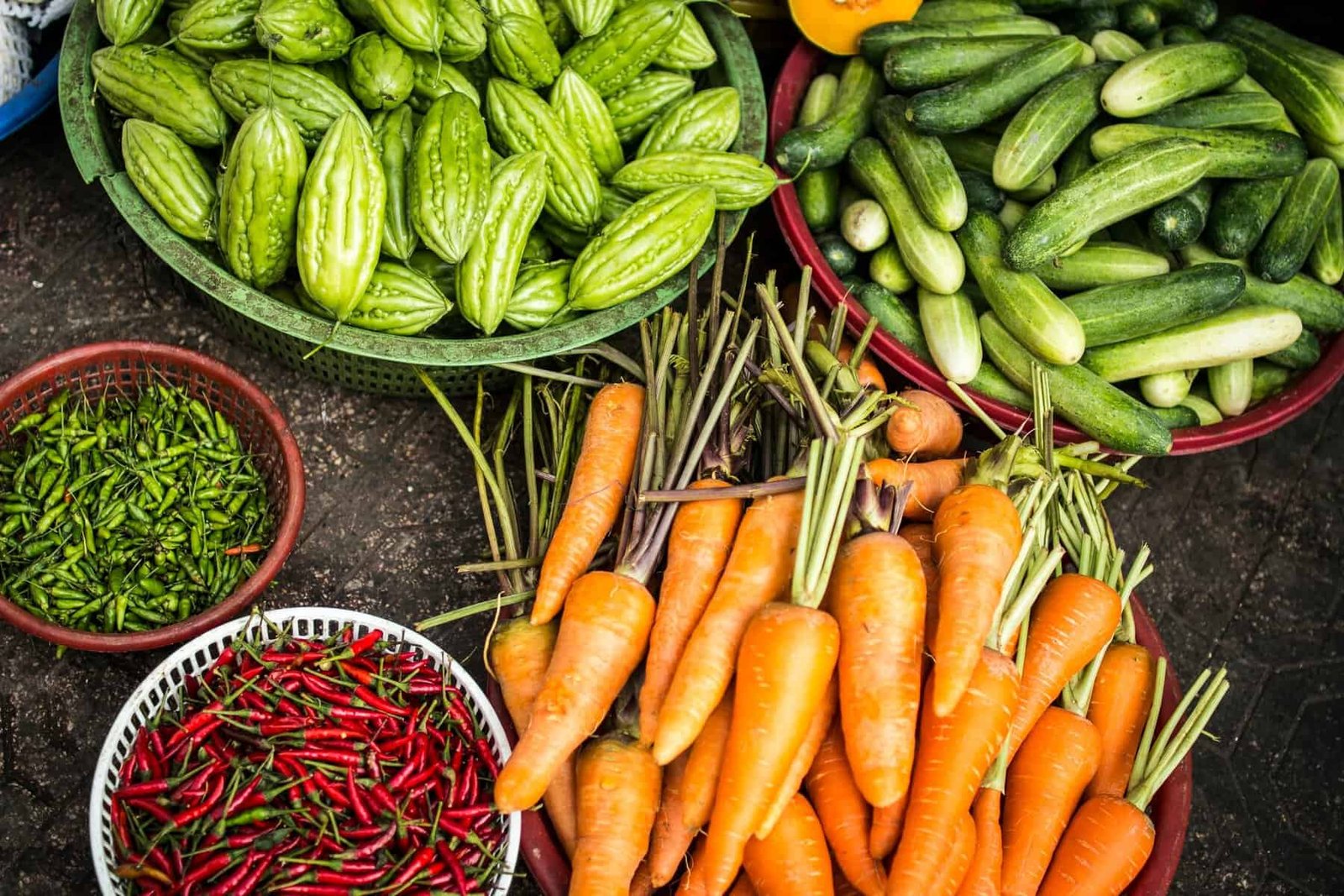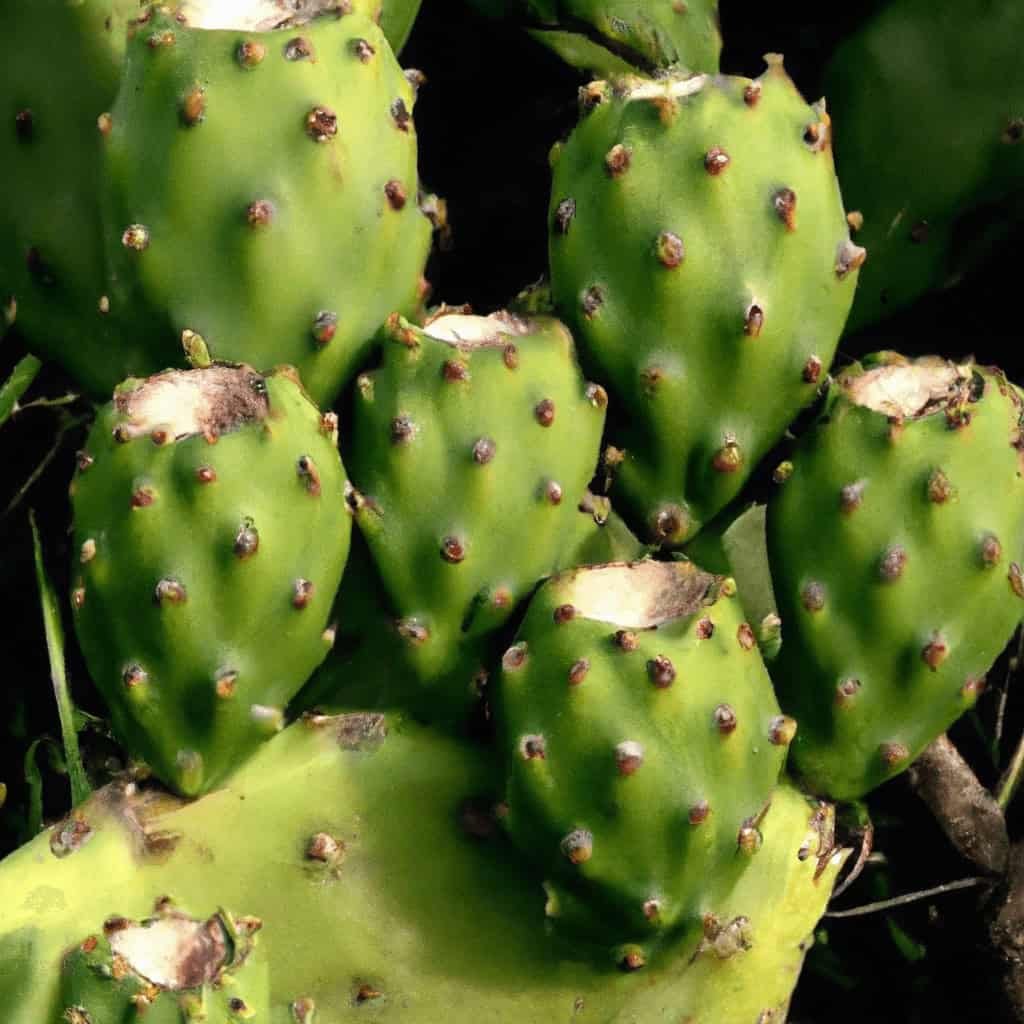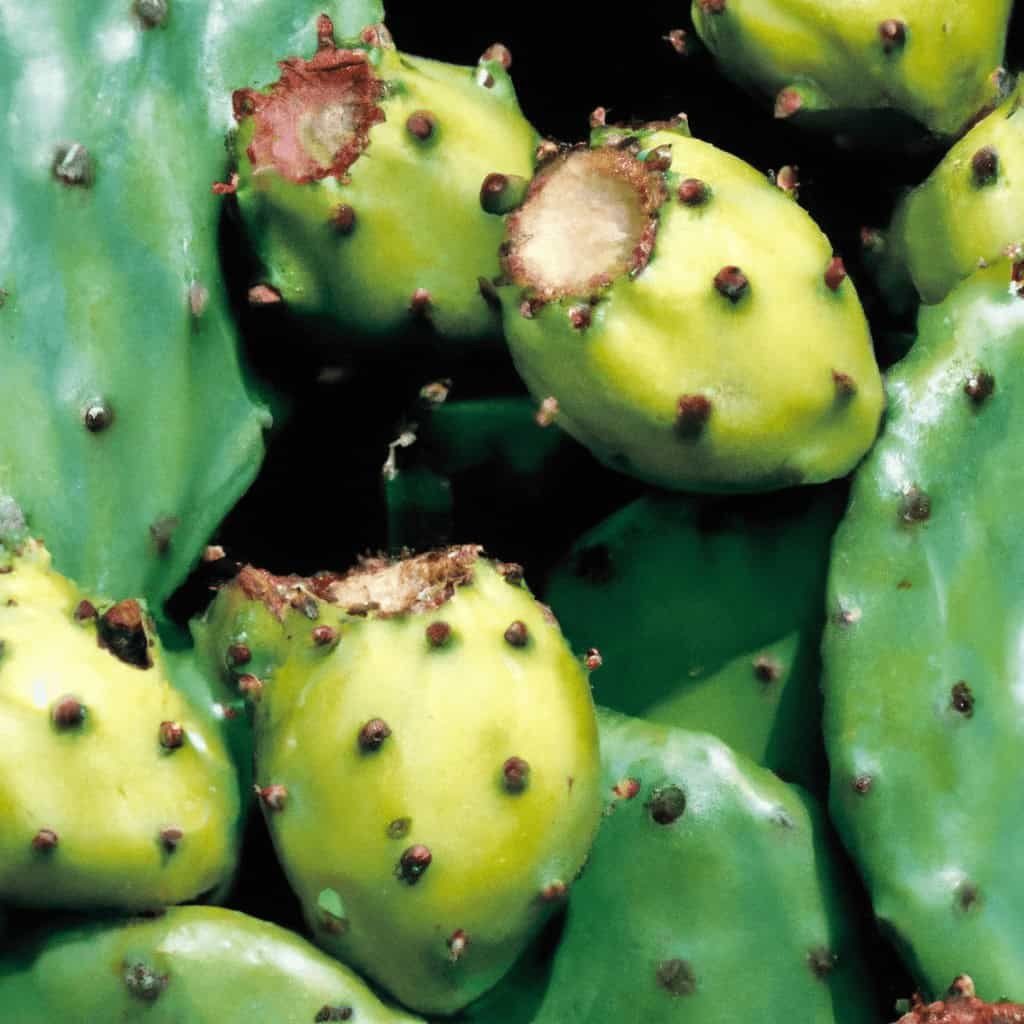If you’re an avid cook or simply curious about expanding your culinary horizons, you may find yourself wondering if it’s possible to use both young and mature nopal pads in recipes. Well, wonder no more! Whether you’ve been eyeing those vibrant, tender pads or those more robust, mature ones, rest assured that both can be transformed into delicious dishes that will tantalize your taste buds. So, the next time you spot nopal pads at your local grocery store or farmer’s market, go ahead and grab any age you desire, as the possibilities are endless when it comes to incorporating them into your favorite recipes.

Young and Mature Nopal Pads in Recipes
Nopal pads, also known as prickly pear cactus pads, are not only a popular ingredient in Mexican cuisine but also offer a range of health benefits. While both young and mature nopal pads can be used in recipes, there are some key differences between the two. Understanding the distinctions and knowing how to select, prepare, and cook with each type will allow you to take full advantage of their unique flavors and textures. In this article, we will explore the difference between young and mature nopal pads, the benefits of using each, various cooking techniques for each type, and some delicious recipes that can be made with both young and mature nopal pads.
Difference Between Young and Mature Nopal Pads
Young nopal pads, also referred to as nopalitos, are the tender and smaller pads that are harvested when the cactus is still growing. They have a vibrant green color and a mild, slightly tart flavor. On the other hand, mature nopal pads are the larger pads that have been on the cactus for a longer period. They are darker in color and have a more robust, earthy taste. The difference in texture is also noticeable, with young nopal pads being more tender and easier to chew compared to the fibrous and slightly tougher mature pads.
Benefits of Using Young Nopal Pads
Using young nopal pads in your recipes offers several benefits. Firstly, their tender texture makes them ideal for raw preparations such as salads and salsas. They add a refreshing crunch and a touch of acidity to these dishes. Secondly, young nopal pads are lower in oxalates, a substance that can interfere with calcium absorption in the body. This makes them a suitable choice for individuals who are concerned about oxalate intake. Lastly, young nopal pads are packed with vitamins and minerals, including vitamins A, C, and K, as well as potassium and magnesium, making them a nutritious addition to any meal.
Benefits of Using Mature Nopal Pads
While mature nopal pads may not be as tender as their younger counterparts, they offer their own set of advantages. Due to their firmer texture, mature nopal pads hold up well in cooked dishes and can withstand more intense cooking techniques such as boiling, baking, and pickling. They develop a rich and unique flavor when cooked, enhancing the overall taste of dishes. Additionally, mature nopal pads are a good source of dietary fiber, aiding in digestion and promoting a healthy gut. They also contain antioxidants and phytochemicals that contribute to their potential anti-inflammatory properties.

Selecting and Preparing Nopal Pads
To make the most of your nopal pad recipes, it is essential to choose the right nopal pads and properly prepare them before cooking. Here are some tips on selecting and preparing nopal pads:
Choosing the Right Nopal Pads
When selecting nopal pads, look for firm pads that are free from blemishes and mold. Young nopal pads should be smaller in size, vibrant green in color, and have a smooth texture. Mature nopal pads, on the other hand, will be larger, darker, and may have a few small prickles.
Cleaning and Prepping the Nopal Pads
Before using nopal pads in your recipes, they need to be thoroughly cleaned to remove any dirt or debris. Start by rinsing the pads under cool running water, using a vegetable brush to scrub away any stubborn dirt. Trim off any damaged or discolored areas. Then, using a sharp knife or vegetable peeler, carefully remove the thorns and spines from both sides of the pad. Take care not to remove too much edible flesh in the process.
Removing Thorns and Spines
To remove the thorns and spines from nopal pads, you have a few options. One method is to hold the pad firmly with tongs and use a sharp knife to carefully shave off the thorns and spines. Another method is to use a vegetable peeler to gently scrape off the thorns. If you prefer a more traditional approach, you can use a pair of kitchen tongs or a fork to hold the pad while using an open flame to singe off the thorns. Be cautious when using open flames and always work in a well-ventilated area.
Cooking Techniques for Young Nopal Pads
Young nopal pads are versatile and lend themselves well to a variety of cooking techniques. Here are three popular methods for cooking young nopal pads:
Grilling
Grilling young nopal pads adds a smoky flavor and beautiful char to the pads. Preheat your grill to medium-high heat. Brush the nopal pads with olive oil and season with salt and pepper. Place them directly on the grill grate and cook for about 5 minutes per side, until they are tender and have grill marks. Grilled young nopal pads can be used as a side dish or chopped and added to tacos or fajitas.
Steaming
Steaming young nopal pads is a gentle cooking method that helps to retain their natural flavors and nutrients. Fill a pot with an inch of water and bring it to a boil. Place a steamer basket in the pot and carefully arrange the nopal pads in a single layer. Cover the pot and steam for approximately 10-15 minutes, until the pads are tender. Steamed young nopal pads can be used in salads, omelets, or added to soups.
Stir-Frying
Stir-frying young nopal pads quickly cooks them while preserving their vibrant color and crisp texture. Heat a tablespoon of oil in a skillet or wok over high heat. Add the sliced nopal pads and any desired vegetables or seasonings. Stir-fry for about 3-5 minutes until the pads are tender but still have a slight crunch. Stir-fried young nopal pads are perfect for adding a unique twist to stir-fries, pasta dishes, or even pizza toppings.

Cooking Techniques for Mature Nopal Pads
Mature nopal pads require slightly different cooking techniques to optimize their flavor and texture. Here are three recommended methods:
Boiling
Boiling mature nopal pads helps to soften their fibrous texture and mellow out any bitterness. Place the sliced pads in a pot of boiling water and cook for approximately 20-30 minutes, or until they are tender when pierced with a fork. Drain the boiled nopal pads and they are ready to be used in soups, stews, or stir-fries.
Baking
Baking mature nopal pads is a great way to achieve a caramelized flavor and tender texture. Preheat your oven to 375°F (190°C). Slice the nopal pads into smaller pieces and place them on a baking sheet. Drizzle with olive oil, sprinkle with your favorite seasonings, and toss to coat. Bake for about 20 minutes, flipping halfway through, until they are golden brown and fork-tender. Baked mature nopal pads can be served as a side dish or used as a topping for pizzas, tacos, or salads.
Pickling
Pickling mature nopal pads is a wonderful way to preserve them and add a tangy flavor to your dishes. Start by slicing the pads into thin strips or your desired shape. In a saucepan, bring a mixture of vinegar, water, salt, sugar, and your preferred spices to a boil. Place the nopal slices in a clean, sterilized jar and pour the hot brine over them, ensuring they are completely submerged. Allow the pickled nopal pads to cool before sealing the jar and refrigerating for at least 24 hours. Pickled mature nopal pads can be added to sandwiches, tacos, or enjoyed as a tangy snack.
Recipes That Work Well with Young Nopal Pads
Young nopal pads shine in various recipes due to their mild flavor and tender texture. Here are three delicious recipes that showcase the versatility of young nopal pads:
Nopal Salad
Ingredients:
- 2 young nopal pads, cleaned and diced
- 1 tomato, diced
- 1/4 red onion, thinly sliced
- 1 jalapeno, seeded and minced
- 2 tablespoons chopped fresh cilantro
- Juice of 1 lime
- Salt and pepper to taste
Instructions:
- In a bowl, combine the diced young nopal pads, tomato, red onion, jalapeno, and cilantro.
- Squeeze lime juice over the mixture and season with salt and pepper.
- Toss gently to combine all the ingredients.
- Let the salad marinate in the refrigerator for at least 30 minutes to allow the flavors to meld.
- Serve chilled as a refreshing side dish or as a topping for tacos and tostadas.
Nopal Salsa
Ingredients:
- 2 young nopal pads, cleaned and diced
- 2 tomatoes, diced
- 1/2 white onion, finely chopped
- 1 jalapeno, seeded and minced
- 2 cloves of garlic, minced
- Juice of 1 lime
- 1/4 cup chopped fresh cilantro
- Salt and pepper to taste
Instructions:
- In a blender or food processor, combine the diced young nopal pads, tomatoes, onion, jalapeno, garlic, lime juice, and cilantro.
- Pulse until the mixture reaches your desired consistency.
- Season with salt and pepper, adjusting to taste.
- Transfer the salsa to a serving bowl and refrigerate for at least 1 hour to allow the flavors to develop.
- Serve with tortilla chips or use as a topping for grilled meats, tacos, or quesadillas.
Nopal Tacos
Ingredients:
- 4 small corn tortillas
- 2 young nopal pads, cleaned and sliced
- 1 tablespoon olive oil
- 1/2 teaspoon ground cumin
- 1/2 teaspoon smoked paprika
- Salt and pepper to taste
- Toppings of your choice (e.g., avocado, minced onion, queso fresco, lime wedges)
Instructions:
- Heat a skillet over medium-high heat and warm the tortillas until they are pliable. Keep warm.
- In the same skillet, heat the olive oil over medium heat. Add the sliced young nopal pads, cumin, smoked paprika, salt, and pepper.
- Stir-fry for about 3-5 minutes, until the nopal pads are tender and slightly charred.
- Divide the nopal pad mixture among the warmed tortillas and top with your desired toppings.
- Serve the nopal tacos as a light and nutritious meal or as part of a larger feast.

Recipes That Work Well with Mature Nopal Pads
Mature nopal pads lend themselves to heartier dishes and offer a robust flavor when cooked. Here are three recipes to showcase the versatility of mature nopal pads:
Nopal Soup
Ingredients:
- 2 mature nopal pads, cleaned and diced
- 1 small onion, chopped
- 2 cloves of garlic, minced
- 2 tomatoes, diced
- 4 cups vegetable broth
- Juice of 1 lime
- 1 teaspoon ground cumin
- 1 teaspoon dried oregano
- Salt and pepper to taste
- Optional toppings: cilantro, avocado, tortilla strips
Instructions:
- In a large pot, sauté the chopped onion and minced garlic over medium heat until softened.
- Add the diced nopal pads and tomatoes to the pot. Cook for 5 minutes, stirring occasionally.
- Pour in the vegetable broth, lime juice, cumin, and dried oregano. Season with salt and pepper.
- Bring the soup to a boil, then reduce the heat to low and simmer for 20-30 minutes, until the nopal pads are tender.
- Adjust the seasoning if needed.
- Serve the nopal soup hot, garnished with fresh cilantro, avocado slices, and tortilla strips, if desired.
Nopal Enchiladas
Ingredients:
- 6 mature nopal pads, cleaned and sliced
- 1 tablespoon olive oil
- 1 small onion, chopped
- 2 cloves of garlic, minced
- 1 red bell pepper, chopped
- 1 jalapeno, seeded and minced
- 1 cup cooked black beans
- 1 teaspoon ground cumin
- 1 teaspoon chili powder
- Salt and pepper to taste
- 12 corn tortillas
- 2 cups enchilada sauce
- 1 cup shredded cheese (e.g., Monterey Jack, queso fresco)
Instructions:
- Preheat your oven to 375°F (190°C).
- In a skillet, heat the olive oil over medium heat. Add the chopped onion, minced garlic, red bell pepper, and jalapeno. Sauté until the vegetables are softened.
- Add the sliced mature nopal pads, cooked black beans, cumin, chili powder, salt, and pepper. Stir until well combined and heated through.
- Warm the corn tortillas in a lightly greased skillet until they are pliable.
- Spoon about 2 tablespoons of the nopal filling onto each tortilla and roll tightly. Place the enchiladas seam-side down in a greased baking dish.
- Pour the enchilada sauce over the rolled tortillas, ensuring they are completely covered. Sprinkle the shredded cheese evenly over the top.
- Bake for 20-25 minutes, until the enchiladas are heated through and the cheese is melted and bubbly.
- Serve the nopal enchiladas hot, garnished with fresh cilantro and a side of Mexican rice or refried beans.
Nopal Stew
Ingredients:
- 3 mature nopal pads, cleaned and diced
- 2 tablespoons olive oil
- 1 onion, chopped
- 3 cloves of garlic, minced
- 1 pound beef or pork, cubed
- 2 tomatoes, diced
- 3 cups beef or vegetable broth
- 1 teaspoon ground cumin
- 1 teaspoon dried oregano
- Salt and pepper to taste
- Fresh cilantro for garnish
Instructions:
- Heat the olive oil in a large pot or Dutch oven over medium heat. Add the chopped onion and minced garlic. Sauté until fragrant and softened.
- Add the cubed beef or pork to the pot and brown on all sides.
- Stir in the diced mature nopal pads, tomatoes, beef or vegetable broth, cumin, dried oregano, salt, and pepper.
- Bring the stew to a boil, then reduce the heat to low and simmer, covered, for 1.5 to 2 hours, or until the meat is tender and the flavors have melded together.
- Adjust the seasoning if needed.
- Serve the nopal stew hot, garnished with fresh cilantro. This hearty dish pairs well with warm tortillas or crusty bread.
Using Both Young and Mature Nopal Pads in a Recipe
Combining both young and mature nopal pads in a single recipe allows you to enjoy a range of flavors and textures. Here are two recipes that highlight the use of both types of nopal pads:
Ratatouille with Nopal Pads
Ingredients:
- 2 young nopal pads, cleaned and diced
- 2 mature nopal pads, cleaned and diced
- 1 eggplant, diced
- 1 zucchini, diced
- 1 yellow squash, diced
- 1 red bell pepper, diced
- 1 onion, sliced
- 3 cloves of garlic, minced
- 2 tablespoons olive oil
- 1 teaspoon dried thyme
- 1 teaspoon dried oregano
- Salt and pepper to taste
- Fresh basil for garnish
Instructions:
- Preheat your oven to 375°F (190°C).
- In a large baking dish, combine the diced young nopal pads, mature nopal pads, eggplant, zucchini, yellow squash, red bell pepper, sliced onion, and minced garlic.
- Drizzle olive oil over the mixture and season with dried thyme, dried oregano, salt, and pepper. Toss until well coated.
- Bake for 30-40 minutes or until the vegetables are tender and caramelized, stirring occasionally.
- Remove from the oven and garnish with fresh basil.
- Serve the ratatouille with nopal pads as a flavorful side dish or as a vegetarian main course.
Nopal Pad Curry
Ingredients:
- 2 young nopal pads, cleaned and diced
- 2 mature nopal pads, cleaned and diced
- 1 tablespoon vegetable oil
- 1 onion, chopped
- 2 cloves of garlic, minced
- 1 tablespoon grated fresh ginger
- 2 tablespoons curry powder
- 1 can (13.5 ounces) coconut milk
- 1 cup vegetable broth
- 1 cup diced potatoes
- 1 cup diced carrots
- 1 cup sliced bell peppers
- Salt and pepper to taste
- Fresh cilantro for garnish
Instructions:
- In a large skillet or saucepan, heat the vegetable oil over medium heat. Add the chopped onion, minced garlic, and grated ginger. Sauté until fragrant and softened.
- Stir in the curry powder and continue cooking for an additional minute, until fragrant.
- Add the diced young nopal pads, mature nopal pads, coconut milk, vegetable broth, potatoes, carrots, and sliced bell peppers to the skillet. Season with salt and pepper to taste.
- Bring the mixture to a boil, then reduce the heat to low and simmer, covered, for about 15-20 minutes or until the vegetables are tender.
- Adjust the seasoning if needed.
- Garnish the nopal pad curry with fresh cilantro.
- Serve the curry hot over steamed rice or with naan bread for a comforting and flavorful meal.

Tips and Considerations
When working with nopal pads, there are a few tips and considerations to keep in mind:
Store-Bought vs. Homegrown
If you have access to fresh nopal pads, either through your local grocery store or by growing your own cactus, it is recommended to use them as they will be the highest quality. However, if fresh nopal pads are not readily available, you can also find them canned or jarred in the international section of many supermarkets.
Adjusting Cooking Times for Different Pads
The cooking times provided in the recipes are general guidelines and may need to be adjusted based on the thickness and maturity of the nopal pads you are using. Monitor the texture and tenderness of the pads while cooking and adjust the cooking time accordingly.
Serving Sizes and Portioning
Consider the serving sizes and portioning when planning your meals. Nopal pads are quite filling, so it is recommended to start with smaller portions and adjust according to individual appetites. Additionally, the recipes provided can be easily scaled up or down to accommodate the number of servings needed.
Conclusion
In conclusion, both young and mature nopal pads offer their own unique flavors, textures, and health benefits. Young nopal pads are tender, mild, and perfect for raw preparations or quick-cooking techniques such as grilling, steaming, and stir-frying. On the other hand, mature nopal pads have a more robust flavor and firmer texture, making them suitable for boiling, baking, and pickling. By understanding the difference between the two types of nopal pads and utilizing various cooking techniques, you can create a wide array of delicious recipes. Whether you prefer the vibrant crunch of young nopal pads in a refreshing salad or the rich flavors of mature nopal pads in a hearty stew, nopal pads are a versatile and nutritious addition to any meal. So go ahead, explore the culinary possibilities of nopal pads, and enjoy the tastes of Mexican cuisine right in your own kitchen!

